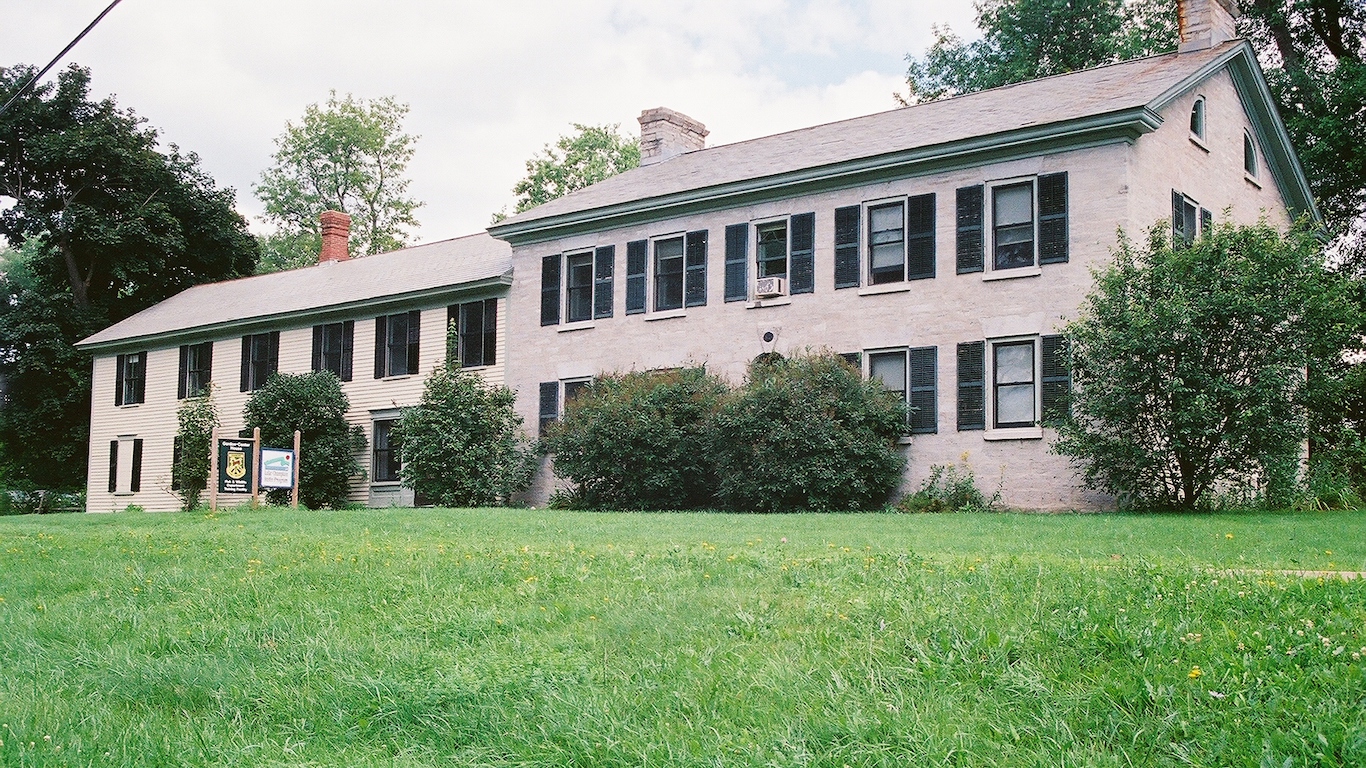Health and Healthcare
COVID-19: This Is the Safest County in the Safest State in America

Published:

The COVID-19 pandemic continues to ravage the United States. The country’s 400,000 deaths are about 20% of the world’s total. Confirmed cases have reached 24,290,413 in America and routinely rise by 200,000 per day. Fatal cases number 403,063 and have risen by as much as 4,000 a day. The Centers for Disease Control and Prevention expects total American deaths will reach 500,000 by the middle of February. The degree to which the disease has affected the country varies considerably from state to state and county to county.
As some evidence of how devastating the disease can be from place to place and how some other areas have been largely sparred, recall that New York State had a crippling wave of infections and deaths early. The state continues to have the most coronavirus deaths compared to any other, at 40,753. Most of these happened in March, April and early May. That figure, in turn, was pushed up by New York City, which has had 26,104 fatal cases.
Counties in and around the city still have death rates that are among the 10 worst counties in the country. These include four of New York City’s boroughs: Kings County (home to Brooklyn), Queens County, Bronx County and New York County (home to Manhattan).
As the disease spread south and west, some of America’s largest counties in those regions were devastated. Los Angeles County, the biggest county in the nation based on population, has had 13,936 deaths, the highest of any county. Harris County (home to Houston) has had 3,795. Miami-Dade has had 4,617. Maricopa County (home to Phoenix) has had 6,443.
COVID-19 did not pass by rural counties and sparsely populated areas. Two months ago, North and South Dakota were the hardest-hit states, based on often-used measures of deaths and cases per 100,000, which allows for comparisons from county to county and state to state.
The disease has returned to some areas with a vengeance. Los Angeles County has been overwhelmed in the past month. Some hospitals have run out of intensive care unit beds. Phoenix faces similar hurdles.
One state stands out because of its low number of fatal cases, confirmed cases and the same figures per 100,000 people. Vermont has the fewest confirmed cases in the United States by far, at 10,220. The next lowest number is Hawaii at 25,470. Vermont’s death count stands at a very low 163. Cases per 100,000 are also very low at 26. Deaths per thousand are again very low at 0.16.
Among Vermont’s counties, the one with the lowest number of confirmed cases is Grand Isle County, which had 78. It has not had a single fatal case. Cases per 100,000 are a remarkably low 16.
Grand Isle County is on Vermont’s northwest corner and borders Canada to its north. It has a population of 7,235, according to figures from the U.S. Census as of July 1, 2019. Some 94% of the population is white. The median household income in the county is $71,587, slightly above the national average. The poverty rate is 8.1%, well below the national number. Poverty has been associated with high infection and death rates across most of the United States.
Grand Isle County has two advantages as the disease spread. The first is that it is sparsely populated, although that did not help many counties in North and South Dakota. However, unlike these states, Vermont has strict quarantine rules and limits travelers from other states. The state is considered a model for practices that slow the spread of the disease.
Retirement can be daunting, but it doesn’t need to be.
Imagine having an expert in your corner to help you with your financial goals. Someone to help you determine if you’re ahead, behind, or right on track. With SmartAsset, that’s not just a dream—it’s reality. This free tool connects you with pre-screened financial advisors who work in your best interests. It’s quick, it’s easy, so take the leap today and start planning smarter!
Don’t waste another minute; get started right here and help your retirement dreams become a retirement reality.
Thank you for reading! Have some feedback for us?
Contact the 24/7 Wall St. editorial team.